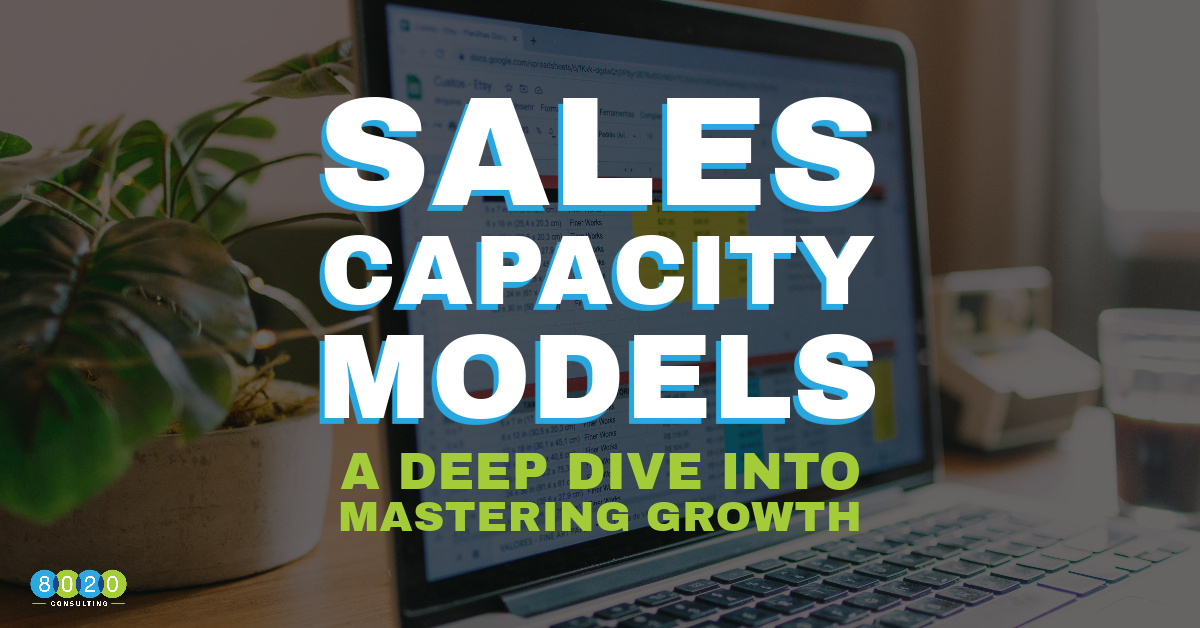All businesses set revenue targets as a common practice. However, the real challenge lies in understanding what it takes to meet those targets. This is where the concept of Sales Capacity Modeling comes into play. In this blog, we’ll provide a breakdown on Sales Capacity Models, from key components and calculations to considerations that are essential for charting a course towards your revenue goals.
What is a Sales Capacity Model?
A sales capacity model is a type of financial model that assists leaders in evaluating necessary headcount to achieve a revenue target. While you may have a clear revenue target, you may be uncertain about its implications for headcount planning. This is where a robust sales capacity model becomes invaluable.
How to Calculate Sales Capacity?
When constructing your sales capacity model, you can choose to delve deeply into your assumptions, but this may introduce additional complexity and effort. This is not a significant issue if your data is clean and easily accessible, but it’s something to keep in mind.
To begin, you will need some or all of the following data points to create your model:
- CRM Data – Historical sales representative data, including the number of opportunities, contract values, close rates, average deal sizes, sales cycle durations, industry, and more.
- Headcount Data – Information on representatives’ start dates, career progression within the company, team changes, and so on.
Once you have these two datasets, you must combine them to gain a comprehensive understanding of each sales representative’s performance. A basic starting point to assess the productivity of each sales rep is to perform the following calculations for a given period (e.g., monthly, quarterly, yearly):
Average Number of Opportunities x Close Rate = Number of Won Opportunities
For instance, if there are 100 opportunities in a year with a 60% close rate, you would have 60 won opportunities generating revenue.
Number of Won Opportunities x Average Deal Size = Revenue Generated
Taking the 60 won opportunities and multiplying them by an average deal size of $100k results in $6M in revenue generated.
Revenue Generated / Average Number of Reps in the Period = Revenue per Rep
If it took 10 reps to generate that $6M in revenue, each rep produced an average of $600k per year.
Target Revenue / Revenue per Rep = Number of Reps to be Hired
Assuming sustained productivity at that rate and a target of $12M in new revenue, this means you need to hire 20 new reps to achieve it.
Given the simplicity of the above calculation, there are numerous factors to consider when building your model. For example, you may want to refine your capacity calculation based on:
- Experience – Reps in their 1st, 2nd, 3rd year, and beyond may generate different revenue amounts.
- Cohorts (e.g., year hired) – Performance may vary based on when reps were hired. For instance, the average performance of a rep hired in 2019 may differ significantly from someone hired in 2022.
- Region – Regional disparities may exist, with some teams having more opportunities and established presence than others.
- Industry – Certain industries may contribute more revenue, but breaking into others may require additional resources. Additionally, some industries may have higher spending on your product.
This suggests the need to calculate revenue per rep by experience levels, cohorts, regions, and industries, depending on your company’s unique circumstances. You may even choose to further segment your analysis for precise modeling and performance tracking.
In addition to segmenting the calculations above, you should consider including factors that could affect your capacity negatively:
- Ramp Time – Onboarding processes may take 1-2 months, and reps may not start generating revenue until month 4.
- Attrition – You won’t retain all your headcount, and losing an experienced rep may lead to a longer recovery period.
- Seasonality – If your business generates most revenue in Q4, hiring well in advance can facilitate ramping up in time.
- Ability to Hire Talent – Aggressive revenue targets may necessitate rapid hiring, which could pose a risk if your talent team is not equipped for it.
- Unintended Drag – Other factors, such as hiring many reps quickly, may impact existing sales reps’ time and performance, e.g., coaching.
These factors may require an additional 15-20% or more headcount to achieve your revenue targets. Building assumptions into your model is essential, and you must evaluate your specific situation to determine the most suitable approach.
Moreover, beyond granularity, consider the broader context of your company and industry:
- Understanding Your Market – Assess how much each region has been penetrated; achieving your model’s expectations may not be feasible if you’ve already reached a high penetration level in a region.
- Current Sales Processes – While your model may suggest hiring more reps, evaluate your existing sales processes, onboarding training, KPI tracking, and more to improve efficiency.
Conclusion
Once you’ve determined the appropriate level of detail and considerations, regularly update your sales capacity model with actual data to assess the accuracy of your assumptions. This will enable you to provide leadership with early insights into sales team performance, whether it’s meeting or falling short of expectations.
By creating a sales capacity model, you and your leadership will gain valuable insight into the timing and number of reps to hire in order to meet your revenue targets.
